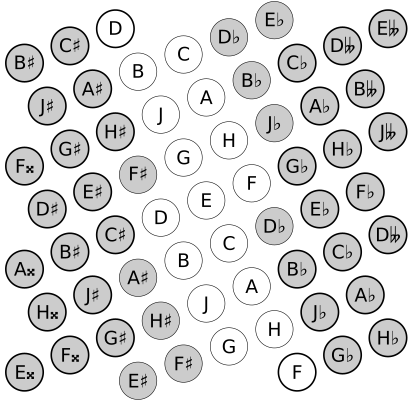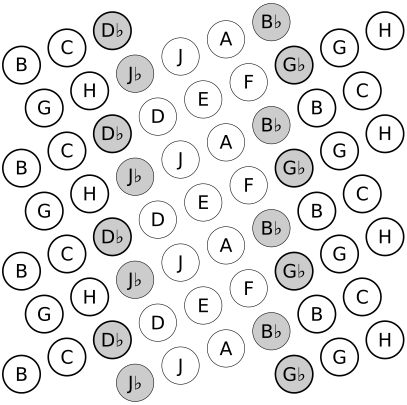I’ve got several requests for the non-octave Bohlen-Pierce scale, and found two appropriate options to map it to the Striso. The colors of the keys don’t make much sense, so I’ve shown those with the line thickness for reference.
Option 1, following the progression of septimal major thirds (the BP version of the progression of fifths):

Option 2, where the tritave takes the place of the ocave:

Both are isomorphic, and interesting ways to explore exotic harmonies.
For now I’ve put them on the last two free slots of the tuning row (until the configuration system is in place). They’re available in firmware v2.0.5.
For less regular tunings I still have to implement the configuration system.
– Piers